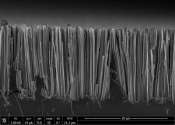Even the oldest eukaryote fossils show dazzling diversity and complexity
The sun has just set on a quiet mudflat in Australia's Northern Territory; it'll set again in another 19 hours. A young moon looms large over the desolate landscape. No animals scurry in the waning light. No leaves rustle ...








